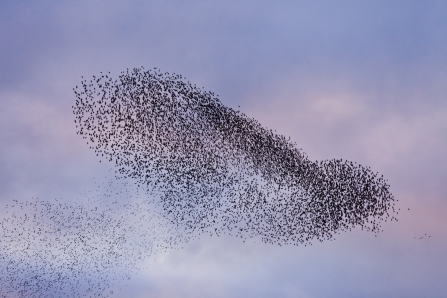In the depths of winter, you could be forgiven for thinking there is no better place to be than tucked up warm at home, with your feet up and the fire on. But at this time of year large numbers of starlings visit Britain from the continent, joining our native populations. While starlings can be seen year round, their numbers swell at this time of year with European cousins seeking out the relative warmth of our island climate. Together they create incredible murmurations - one of the most amazing displays of the natural world.
As afternoons wears on, feeding flocks gather together and then set off for their communal roosts. These roost sites can be the overnight refuge for tens, even hundreds of thousands of birds. And their arrival at the roost is one of the most staggering things you’ll see all year.
Flock after flock after flock of starlings arrives, coming in from all directions to gather together in the skies above their roost site. As the numbers build, with some of the finest ‘murmurations’ reaching into the tens and hundreds of thousands of individuals, the flocks take on a life of their own, swirling back and forth overhead.

